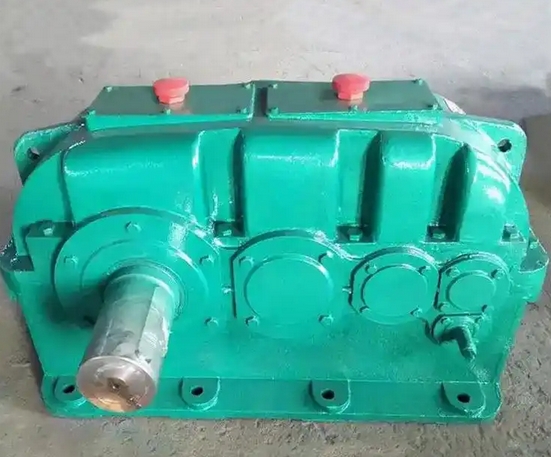What methods can be used to reduce the resistance in the lubrication system of the ZFY315-140-II reducer?
Here are some methods to reduce the resistance of the lubrication system of ZFY315-140-II gearbox:
Inspect and maintain lubrication system components:
Regularly inspect lubrication pumps, filters, oil tanks, pipelines, and other components to ensure they are intact and free from leaks or blockages. For clogged filters, clean or replace the filter element in a timely manner to ensure smooth flow of lubricating oil.

Confirm whether the oil supply pressure of the lubrication pump is normal and meets the requirements of the gearbox. If the pressure is insufficient, it may be due to pump failure or excessive pipeline resistance, and corresponding maintenance or adjustment is needed.
Optimize lubricant selection:
Select the appropriate brand and model of lubricating oil based on the usage environment, load, speed, and other conditions of the reducer. For example, in high-temperature environments, lubricating oil with good high-temperature resistance should be selected; For high load conditions, lubricating oil with good extreme pressure performance can be selected.
On the premise of meeting lubrication requirements, try to choose lubricating oil with lower viscosity. Lubricating oil with low viscosity has good fluidity and can reduce internal friction resistance, but it is important to ensure that it can still form an effective oil film on the surfaces of components such as gears and bearings.
Adjust lubrication parameters:
Optimize the parameters of the circulating lubrication system, such as oil volume, flow rate, etc., based on the actual operation of the gearbox. Ensure that the lubricating oil can be fully supplied to all parts that require lubrication, while avoiding excessive oil volume causing increased oil mixing losses.
Control the temperature of the lubricating oil within a reasonable range. Excessive oil temperature can reduce the viscosity of the oil, affecting the formation and load-bearing capacity of the oil film; If the oil temperature is too low, it will increase the viscosity of the oil and increase the flow resistance. Generally speaking, the working temperature of the gearbox lubricating oil should be controlled at ≤ 80 ℃. The oil temperature can be adjusted by installing an oil cooler or heating device.
Improve lubrication system design:
Optimize pipeline layout, reduce unnecessary bends and throttling areas, and ensure smooth circulation of lubricating oil. Try to shorten the length of the pipeline as much as possible to avoid increasing resistance due to the pipeline being too thin or too long.
For some large or special gearboxes, measures such as adding oil coolers and improving oil pump structures can be considered to enhance the efficiency and reliability of the lubrication system. For example, using an efficient oil pump can provide sufficient oil volume and pressure at lower power consumption.
Strengthen maintenance and upkeep:
Regularly perform comprehensive maintenance on the gearbox, including checking the oil level, replacing lubricating oil, etc. Keep the inside of the gearbox clean to prevent impurities, moisture, and other pollutants from entering the lubrication system, so as not to affect the performance of the oil and cause blockage.
Check the wear of seals, bearings, and other components, and replace damaged parts in a timely manner. Damaged seals can cause lubricant leakage, affecting lubrication effectiveness; Bearing wear can reduce the accuracy of shaft operation and increase frictional resistance.

